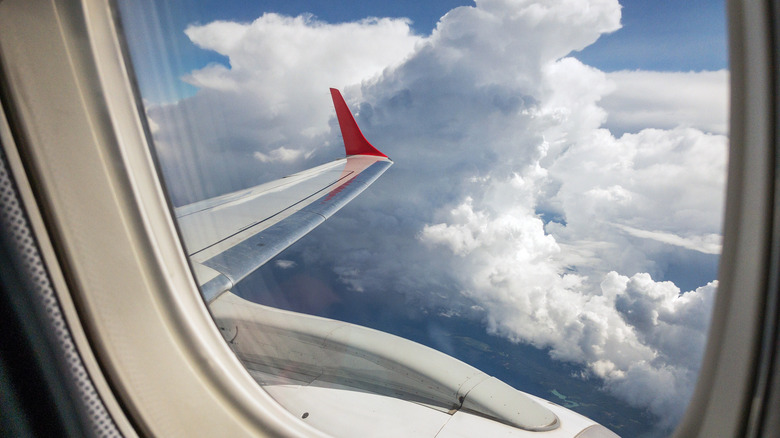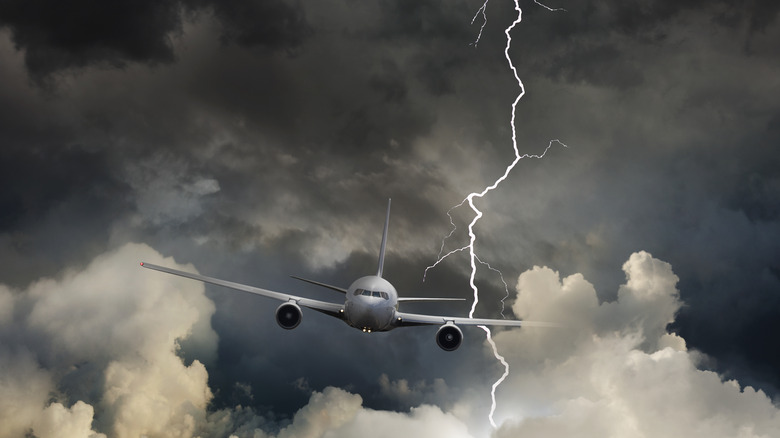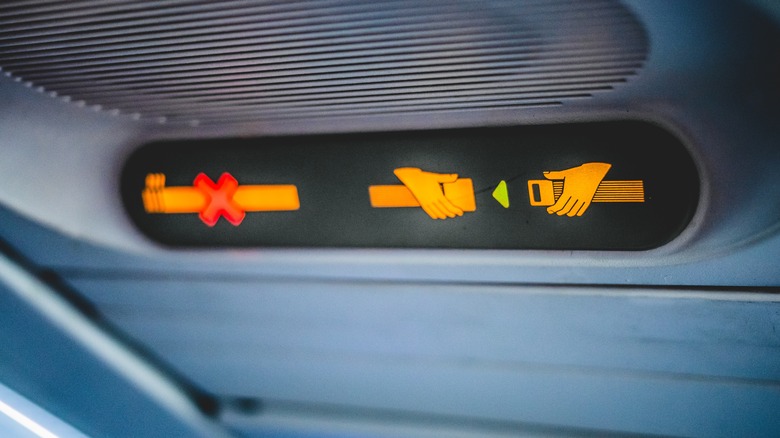How Do Commercial Jet Pilots Detect Incoming Turbulence?
If you're a relatively frequent flyer, you've probably experienced some instances of turbulence. Typically, you won't have been too adversely affected by it. After over a century of commercial aviation, the industry has come to know the world's skies quite well. Science has an understanding of the routes and regions more prone to turbulence, such as those close to mountain ranges (which affect weather patterns and air currents close to them) or jet streams, and so is able to help pilots prepare for and mitigate the issue. The key, in short, is to be prepared for what may happen on a given flight. Wake turbulence, generated by the aircraft itself, can be predictable, but other forms may not.
Regular contact with the all-important air traffic control and reports from other pilots play an enormous role in keeping commercial aircraft up to date on the conditions they could potentially face. Another big advantage that today's pilots and crew have is access to sophisticated radar and weather forecasts. The latter is especially important because, over the course of a lengthy flight, conditions can change dramatically from how they were when the journey began. It's possible to predict the degree of turbulence a flight may experience, and when, using these methods. By so doing, pilots can entirely avoid some of the worst of the conditions, potentially taking a route around, above or below, thereby allowing for a journey that's as smooth as possible.
Predicting the weather often means predicting turbulence
For a commercial pilot, checking the weather isn't as simple as just seeing what the local area's conditions are going to be like, of course, because they may be flying anywhere in the world and experiencing any sorts of changeable conditions on a given day. Before each flight, then, monitoring the conditions on a given route will show them exactly what they're going to be up against. The weather is intrinsically linked to the potential for turbulence, with inclement conditions like thunderstorms typically meaning a significant disturbance in the air. Extreme weather is a considerable challenge for any pilot.
Air traffic controllers have a limited capacity to track and warn of the weather conditions ahead. Luke Alcorn, an air traffic controller at the ARTCC in Florida's Jacksonville, explained to Flying Magazine, "if you have datalink weather [SiriusXM or FIS-B radar], you are pretty much seeing what center controllers see." This means that some types of turbulence are very difficult to detect and predict. Clear air turbulence, for instance, is more challenging to detect, because it often occurs independently of weather conditions (more commonly associated with wind shear). Measures such as radar on the aircraft themselves have developed, while complementary factors like reports from other pilots, known in the industry as PIREPS, lend valuable additional insight.
The Federal Aviation Administration states that these reports should be made when conditions such as wind shear, thunder, or moderate or stronger turbulence is predicted or underway. By doing so, the Service A domestic aviation weather system is updated with broader warnings about the conditions in a given area, making for an invaluable resource for pilots to refer to.
Other ways to avoid turbulence and evolve the response to it
Today, millions of people have access to weather reports around the world by simply navigating to a website, or simply in an app on their phone's homescreen. Once a flight is underway, it's crucial for pilots and crew to have access to real-time weather reports too, in an easy-to-parse and informative presentation. In some aircraft, this is provided in the cockpit, and is typically color coded to indicate whether a specific area is smooth (green) up to worthy of avoiding (red). This is one reason why there's quite a lot of variability in the time a flight takes from one airport to another. It's not just about the fastest or most straightforward route, with the safest in current conditions always being the priority.
As such, commercial pilots often have the warning they need to mitigate the ill effects of turbulence, if not avoid it entirely. These efforts don't just extend to the period before and during the flight, though. Briefings after a flight give personnel an opportunity to discuss the conditions flown through and how well the strategies employed worked. This provides an invaluable opportunity to identify any aspects of the procedure that could use improvement, and so helps to shape future responses to detecting and mitigating the effects of turbulence.
University of Reading atmospheric scientist Professor Paul Williams told the BBC in July 2025 that approximately three quarters of clear air turbulence can now be accurately detected, noting, "twenty years ago it was more like 60% so thanks to better research that figure is going up and up over time." The sterling work of pilots and other personnel continues to make aviation safer for everybody. This includes private jets, which also face a degree of turbulence.


